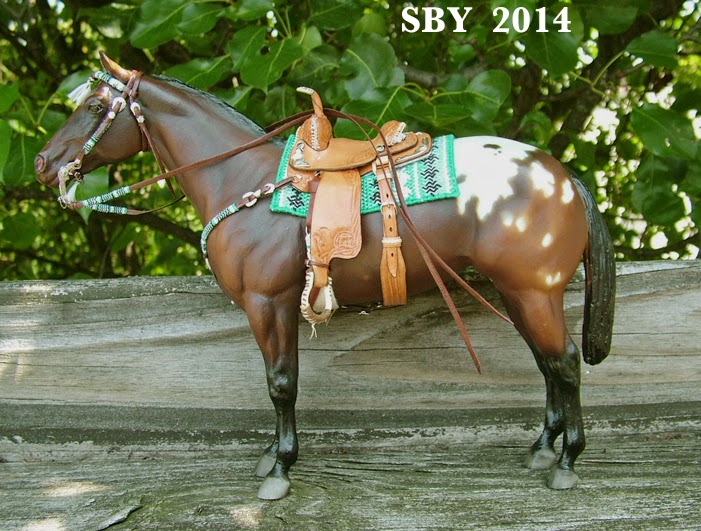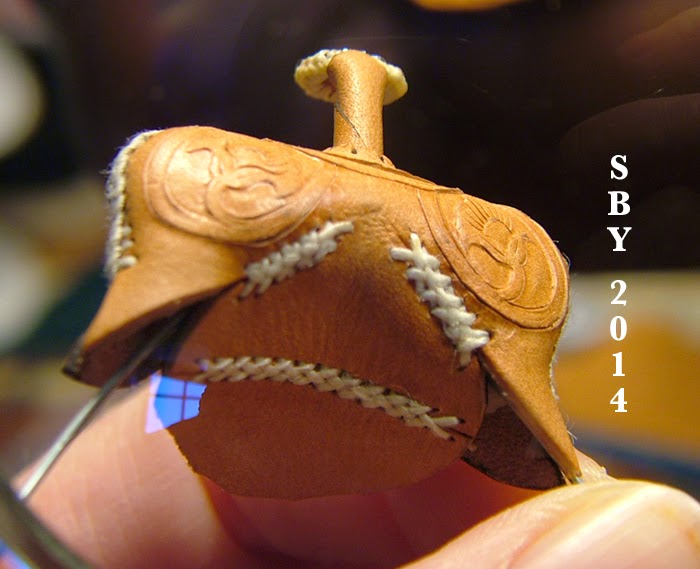Every finished TSII saddle gets its own photo shoot, usually on the railing of the deck, if it's not winter.
Amazingly the wood is not terribly mossy. But the background is somewhat distracting to the fine braiding. Still, tradition rules, so we start with the horse the set was built off of, the customer's requested mold, which is thus most closely identified with it ever after in my eyes (and records). This is my Breezing Dixie, named Gypsy Tintinnara, an Australian Aborigine name which refers to the stars of the Big Dipper.
The saddle, as mentioned in earlier posts, was crafted for A. Schmidt of Germany as one of our 15 winners of the 2009 TSII Tack Orders Lottery. Nobody knew at the time that it would be my last Lottery, (at least for the foreseeable future). She gave me a Lisa Bowring piece to base the bridle from:
and requested that the saddle be a copy of TSII #419, the Celtic Cutter.
If I say so myself, I am satisfied.
What's different about this set, that I haven't done before? How does one distinguish one's four-hundred-and-fifty-second saddle? Off the cuff, it's the blanket. I haven't allowed myself to make one of my cross stitches before solely for a customer. They take too much time.
I honestly didn't see that coming!
Another noteworthy aspect of this set is the bit. I made it from a pair of corner plates that match the saddle's corner plates. This is contrary to our normal practice of making bits from scratch... but I wanted to save time and effort (always worth pursuing) and it just seemed the right thing to do. Yet more memorable aspects are the interior construction with the Fimo in the pommel (finally I'm comfortable with this), and the terrific rawhide oxbow stirrups, truly my best so far. Doesn't mean I won't make better ones in the future!
I truly meant this set to be used on a horse with no red in him. The original parameters of the order seemed to preclude that. Imagine my surprise when I put it on Lady Phase and saw how nice it turned out.
This horse's dapples are the result of mold damage, in case you're wondering.
On a red appaloosa, TSII #452 is almost psychedelic.
Here I was seeking a plainer background. I didn't quite have it, but the chimney helped. Along about here you can see I'm having a tough time accurately depicting the true color.
These shots are all PhotoShopped in one way or another. This one isn't too bad, but look back at those Gypsy ones!
Here's a non-red ISH:
And here's a horse I think gives the most accurate color of all, a white gray.
But the best part is -- I actually finished a saddle!! The second saddle to be finished in a year -- this hasn't happened since 2008!! Thank you so much for your patience. Here's hoping such a pleasant precedent can be extended to three... or who knows, even more.

















































